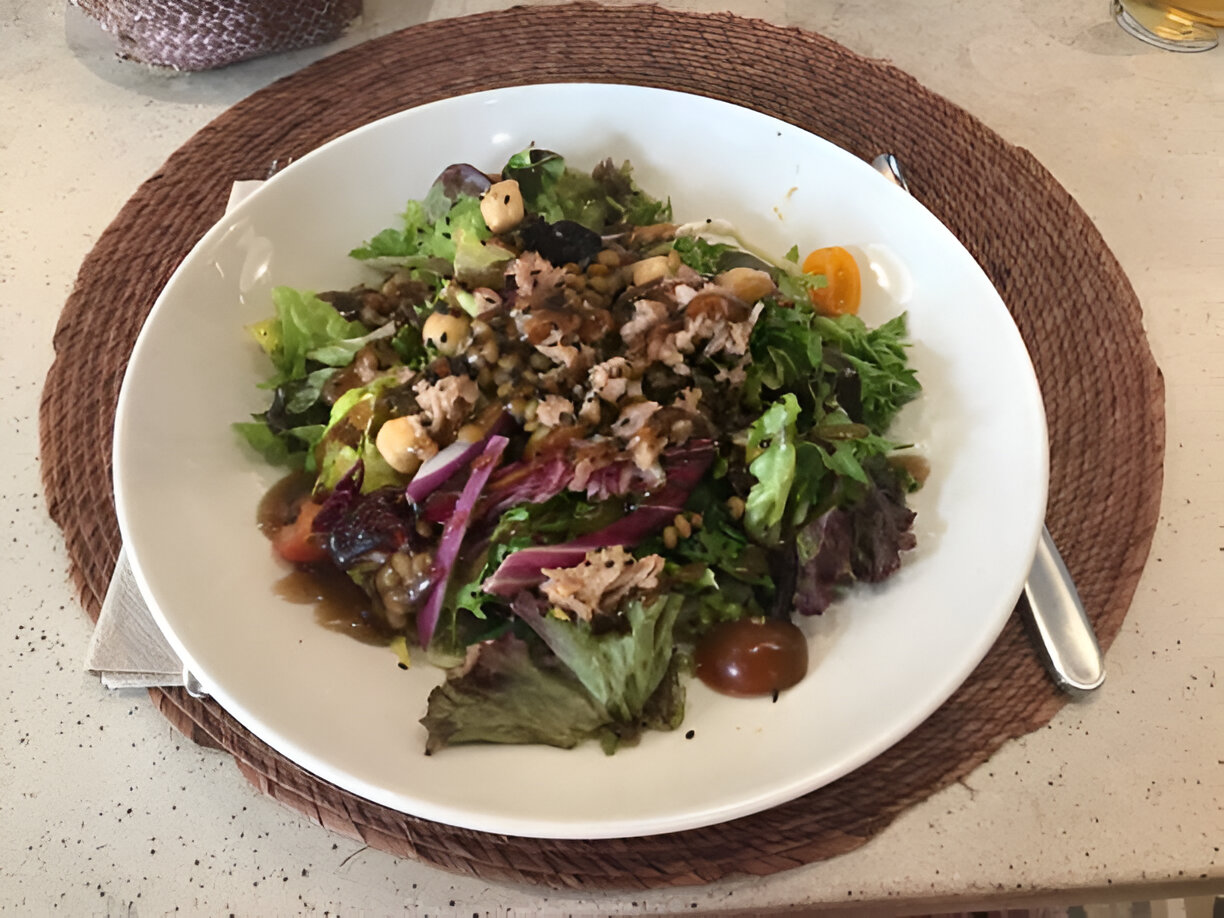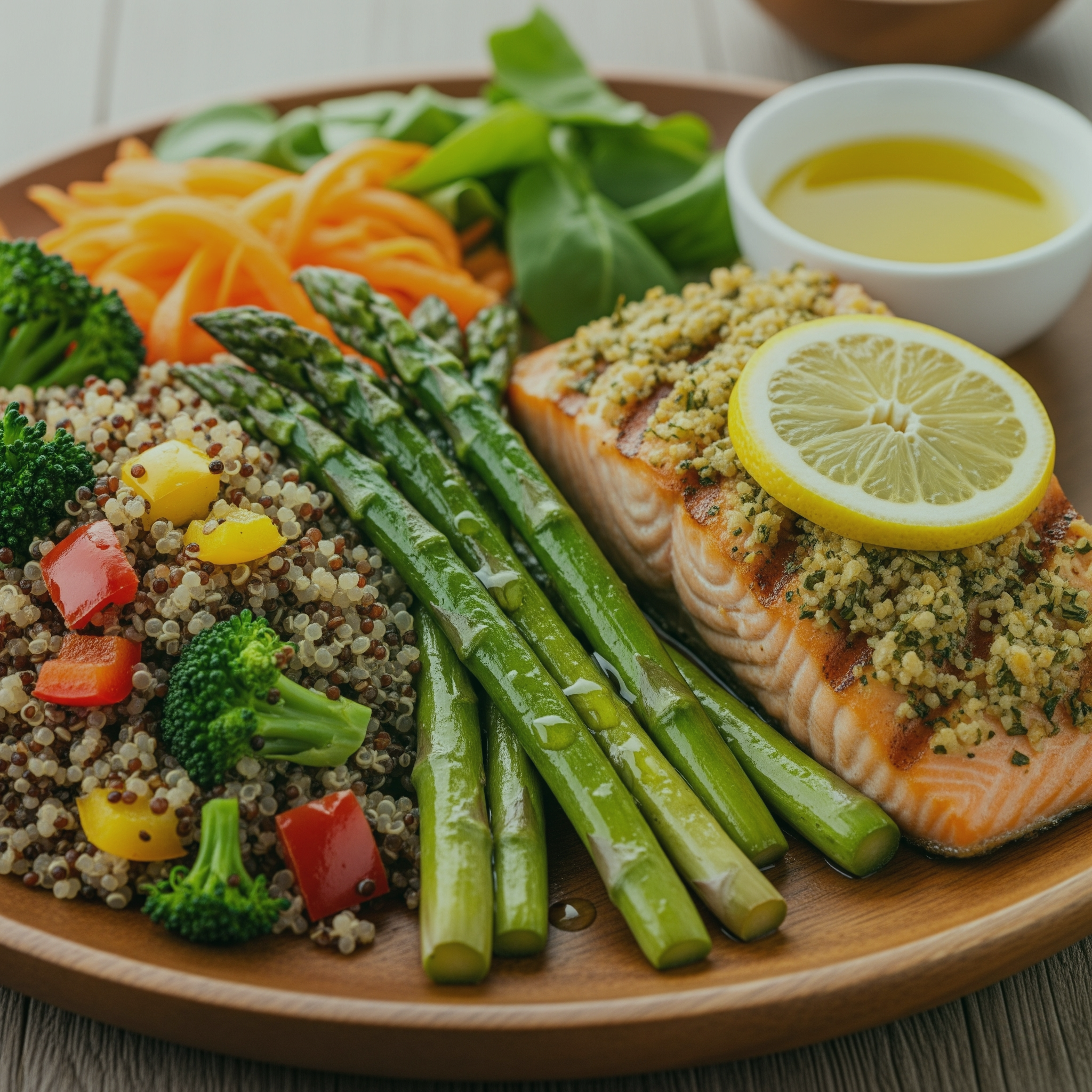In This Article
Have you ever felt uncomfortable right after a meal? Maybe it was a sudden wave of stomach pain, a sharp cramp, or that heavy, upset stomach feeling that just wouldn’t go away. These stomach problems after eating are more common than you might think, and they may be your body’s way of whispering that something isn’t quite right. While it might feel easier to brush it off or blame it on a busy day, your stomach could be trying to tell you something important. Tuning in is the first gentle step toward feeling better.
Your stomach and digestive system are constantly working to keep you balanced. Every bite you take becomes energy and nourishment through a process that relies on harmony. When this balance is disturbed, discomfort can arise. It’s not always about eating the wrong thing—it’s often about your body’s unique needs. The key is to listen without judgment and respond with care.
Sometimes that means noticing patterns. Maybe your pain shows up after certain foods or during stressful days. Or perhaps it happens when you skip meals or eat in a rush. Every person’s stomach tells a different story, but the common thread is this: awareness leads to healing. The more you understand your body’s signals, the easier it becomes to care for it.
By becoming more mindful of when discomfort starts, you begin to uncover clues. Was the meal high in fat or sugar? Were you feeling rushed or overwhelmed while eating? These simple reflections help guide better choices. And over time, small shifts can bring big changes to your overall well-being.
The Story Your Stomach is Trying to Tell

Your body is wise. When something is off in your digestive system, it doesn’t stay quiet. That sharp abdominal pain or lingering upset stomach isn’t just random. It might be your body's way of guiding you toward healing. These symptoms aren’t there to annoy you; they’re gentle signals asking for attention.
It might begin with bloating, a burning feeling in your upper abdomen, or stomach acid bubbling up after a meal. Sometimes, you may even feel chest pain that mimics heart issues but is actually related to digestion. Stomach cramps, indigestion symptoms, and uncomfortable fullness can leave you feeling drained. Your average stomach is more sensitive than you think, especially when certain foods or habits come into play.
Each sensation carries a message. That tightness after a heavy meal might point to slow digestion. The ache in your upper belly might suggest irritation in your stomach lining. These clues can feel frustrating, but they’re also empowering when you learn to understand them. Once you start connecting the dots, you can take small steps to prevent stomach pain and ease your digestive discomfort naturally.
When you begin to recognize these patterns, you can respond with kindness instead of frustration. Your body isn’t working against you—it’s trying to help you find a better path. Honoring your symptoms instead of ignoring them builds a deeper connection with your own health. And through that connection, you’re more likely to find real, lasting relief.
Understanding Your Digestive System’s Role

Think of your digestive system as a smooth-flowing river. When everything is in harmony, food travels easily from your mouth to your stomach, through the small intestine, and into the large intestine. Each part plays a role in how well you digest food and absorb nutrients. But even a small block in this flow can lead to stomach pain or digestive discomfort.
Your stomach breaks down food with the help of stomach acid, then passes it into the small intestine where nutrients are absorbed. From there, the large intestine processes what remains. If any part of this system is irritated or inflamed, symptoms like bloating, abdominal pain, and upset stomach can begin to show up. The digestive tract is delicate and requires balance to function properly.
This system also connects closely with your nervous system and emotions. Stress, anxiety, and poor sleep can disrupt digestion as much as unhealthy eating habits. A tired, overwhelmed body is less efficient at managing food and more prone to indigestion symptoms or acid reflux. That’s why rest, hydration, and physical activity are just as important as what you eat.
When you treat your digestive system with care, it often responds well. That may look like eating smaller meals, reducing certain trigger foods, or pausing to breathe before eating. These small shifts allow your body to do its job without added stress. And over time, they create a foundation for better digestion and more ease after meals.
READ ALSO: Healthy Meals For Dinner You’ll Crave All Week
Common Causes of Pain After Eating

Let’s walk through some of the most common reasons your stomach might hurt after a meal. Foods that are high in fat—like fried foods or rich sauces—take longer to digest and can cause your stomach to produce more acid. This often leads to abdominal pain, upset stomach, or a burning sensation. Spicy foods and acidic foods can also irritate the stomach lining, especially if it’s already inflamed.
Other common triggers include sugary drinks and carbonated drinks. These can cause gas to build up, which stretches the stomach and leads to bloating, cramps, or even sharp pain. If you tend to overeat or eat quickly, your stomach may struggle to keep up. Taking in extra food before the body is ready can overwhelm the system and lead to digestive problems.
Then there’s the matter of food intolerance and food allergy. When your body reacts negatively to certain foods, it can result in inflammation, painful cramps, and changes in your bowel movement. People with celiac disease experience this after they eat gluten. For others, it may be dairy, eggs, or other common ingredients. The discomfort isn’t imagined—your immune system may be involved.
Here’s a simplified list of causes:
- Fatty, fried, spicy, or acidic foods
- Sugary and carbonated drinks
- Overeating or eating too fast
- Food intolerances or food allergies
- Emotional stress while eating
Understanding your personal triggers helps you prevent stomach pain. Each person is unique, and what causes discomfort for one may not for another. The goal isn’t to avoid all foods but to recognize which ones don’t support your body. Awareness leads to better eating habits and fewer symptoms over time.
When It’s More Than Just Discomfort
Sometimes, your symptoms go beyond everyday discomfort and point to a more complex issue. If your stomach pain lingers for weeks or interferes with your day-to-day life, your body may be signaling a chronic condition. Recognizing them early allows you to take the right steps toward relief.
Below are some of the most common digestive disorders that may cause stomach problems after eating:
- Irritable Bowel Syndrome (IBS) – Affects how the large intestine functions, causing abdominal pain, bloating, and irregular bowel movement. It often comes and goes but can be managed through diet and stress reduction.
- Celiac Disease – An abnormal immune response to gluten that damages the small intestine. It leads to nutrient deficiencies, weight loss, and severe digestive problems if untreated.
- Crohn’s Disease – A form of inflammatory bowel disease that can affect any part of the digestive tract, leading to severe abdominal pain, fatigue, and diarrhea. Symptoms often appear in cycles of flare-ups and calm periods.
- Ulcerative Colitis – Another form of inflammatory bowel disease that specifically affects the large intestine and rectum. It causes inflammation, abdominal cramps, and frequent bowel movement.
- Gastroesophageal Reflux Disease (GERD) – Occurs when stomach acid flows back into the esophagus, causing burning sensation, chest pain, and discomfort after eating.
- Functional Dyspepsia – Often called dyspepsia, it involves early fullness, discomfort, or pain in the upper belly without a clear medical cause. Stress and poor eating habits can worsen symptoms.
- Inflammatory Bowel Disease (IBD) – An umbrella term that includes Crohn’s disease and ulcerative colitis, leading to chronic inflammation in the intestinal tract and severe abdominal pain.
These conditions may sound intimidating, but understanding them gives you power. Each has its own causes, risk factors, and treatment plans. With the right guidance and lifestyle changes, many people find ways to live comfortably. Your digestive system responds well to care, and even small improvements can make a difference. The key is to seek professional support and stay patient with your healing journey.
If you notice persistent pain, sudden weight loss, or changes in your appetite, don’t ignore them. These symptoms might indicate that something deeper is going on. A healthcare provider can help with blood tests, imaging tests, or other diagnostic steps to uncover the cause. Listening to your body early allows you to get effective treatment and prevent symptoms from getting worse.
What Pain Feels Like and Why That Matters

Pain shows up in many ways, and your stomach is often the first to speak up. Whether it’s a sharp stomach pain or a deep ache in the upper abdomen, your body is sending you signals. You may notice a burning sensation after meals or pressure in your upper belly that won’t ease. Chest pain, while scary, can sometimes be caused by digestive issues like acid reflux or gas buildup. These symptoms aren’t just random — they’re your body’s way of asking for attention.
Sometimes the pain feels dull, like a slow twist that comes and goes. Other times, it’s more intense, like severe abdominal pain that stops you in your tracks. You may feel a burning feeling that radiates across your belly or a sudden tightness after eating. When this happens often, it’s worth noting the timing, intensity, and location. These patterns help you and your healthcare provider understand what might be going on inside your digestive system.
The type of pain can tell you a lot. If it’s high up in your belly, it might be related to stomach acid or the stomach lining. Lower pain might come from the large intestine or a reaction to something you ate. A painful upper abdomen after a rich or spicy meal could point to indigestion or reflux. Severe pain after eating could even suggest inflammation or ulcers. No matter the source, every type of pain deserves your care and curiosity.
By tuning in to the way your body responds after meals, you become your own guide. You start seeing how different foods or habits affect how your stomach feels. Instead of ignoring the discomfort, you learn to work with it gently. That awareness is the first step toward peace and healing. Your body isn’t trying to stop you — it’s trying to support you.
READ ALSO: 10 Signs of an Unhealthy Gut You Shouldn’t Ignore
Triggers That Might Be in Your Kitchen

The food you keep in your kitchen can make a real difference in how your stomach feels. Some ingredients, especially highly processed ones, may cause bloating, stomach pain, or an upset stomach—especially if your body is already sensitive. By noticing how your body reacts after meals, you can start to understand what works for you and what doesn't. Many people feel relief when they reduce certain foods and replace them with more natural, gentle options. Let’s take a closer look at common triggers.
Here are some common kitchen triggers and why they may cause discomfort:
- Gluten-containing foods – Can cause inflammation in the small intestine for those with celiac disease or gluten sensitivity.
- Carbonated drinks – Trap air in your stomach, leading to bloating and abdominal pain.
- Processed and packaged meals – Often loaded with salt, fat, and additives that slow digestion.
- Fried and fatty foods – Increase stomach acid and take longer to digest, leading to burning sensation and discomfort.
- Spicy or acidic foods – Can irritate the stomach lining and cause a burning feeling.
- Sugary snacks and drinks – Disrupt the gut and can worsen upset stomach symptoms.
Everyone’s digestive system is unique, so not all of these will affect you in the same way. What matters most is becoming aware of how your body responds and adjusting gently from there. You don’t need to eliminate everything—just notice and reduce what triggers your symptoms. Over time, these mindful choices can lead to lasting comfort and healing.
How to Start Healing with Gentle Shifts

Healing your stomach doesn't have to be overwhelming. In fact, small changes often bring the most lasting results. One of the most helpful shifts is eating smaller meals more often, which can ease digestion and reduce the pressure on your stomach. A healthy diet full of whole, unprocessed foods supports your digestive system and helps prevent stomach pain. These steps may feel simple, but they have a powerful effect on how your body feels after eating.
Start by becoming more mindful of your eating habits. Are you rushing through meals? Eating while stressed? Choosing foods that cause discomfort? Gentle awareness of these habits helps you make dietary changes without harsh rules or guilt.
You might notice that physical activity helps your body digest food more smoothly. A short walk after a meal can reduce bloating and calm an upset stomach. Staying hydrated and resting well also supports your immune system and helps reduce inflammation. Together, these small steps form a strong foundation for long-term digestive comfort. There’s no need to change everything at once — just one gentle shift at a time.
By listening to your body and making intentional choices, you begin to create real, lasting relief. You’ll prevent stomach pain instead of reacting to it after the fact. Healing isn't about being strict. It’s about staying kind, being curious, and giving your body the tools it needs to thrive. Trust that even small changes can lead to a lighter, more comfortable you.
When to See a Healthcare Provider

Sometimes, the signs your body gives you are too strong to ignore. If your stomach is hurting often, especially after eating, it’s important to listen and get the support you need. While some symptoms come and go, others might signal a more serious medical condition. It’s not about being fearful—it’s about being proactive. The earlier you check in, the easier it is to find relief and peace of mind.
Here are key symptoms that may mean it’s time to see a healthcare provider:
- Severe stomach pain – Pain that is intense, lasts for hours, or interferes with your daily life.
- Persistent upset stomach – Discomfort, nausea, or bloating that returns after most meals.
- Unexplained weight loss – Dropping weight without trying or changing your diet.
- Digestive problems that won’t go away – Recurring bloating, gas, or indigestion symptoms.
- Changes in bowel movement – New patterns of constipation, diarrhea, or visible blood.
- Chest pain or pain in the upper abdomen – Especially if it happens after eating.
Your provider may run tests like a blood test, imaging tests, or a physical exam to understand what’s going on. These tools help identify if you’re dealing with celiac disease, acid reflux, stomach ulcers, or another condition. They may also recommend medications or a personalized treatment plan that includes dietary changes. With the right guidance, you can take control of your symptoms and feel better.
Your Takeaway — Honor What Your Body Tells You
Your stomach has a voice, and it’s always trying to guide you. Stomach problems after eating aren’t something to fear — they’re gentle clues asking you to slow down, pay attention, and care more deeply for yourself. You are not broken. You are simply learning what your body needs, one experience at a time. Healing starts with listening.
It’s easy to get frustrated when symptoms come and go, or when relief feels far away. But every time you pause to notice, every time you make a small shift, you’re moving in the right direction. Even the choice to read and reflect on this is part of your healing journey. You don’t need to have all the answers. You just need to stay open, curious, and kind to yourself.
Let your symptoms become your teachers. If something hurts, ask why. If something feels better, lean into that. Over time, these small observations add up to big changes. You learn what to eat, when to rest, and how to move in ways that support your digestive system.
So here’s your reminder: your symptoms are not the problem — they are part of the solution. With patience, compassion, and steady care, you can return to a place of balance and ease. Trust your body. It knows the way.





















